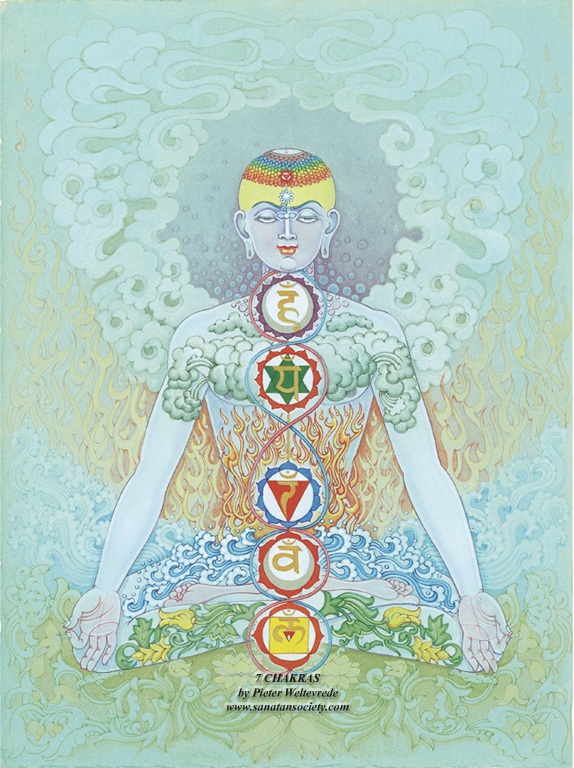What is a Human?
The artist who painted this picture of the chakras and I were both students of Harish Johari. In recent years I have grown a deeper appreciation for the three body centers called brains by Gurdjieff [Here’s Charles Tart on the three brains and what sort of information each brain can provide]. Tai Chi and other movement traditions, describe three dan tien. Rudolf Steiner described a similar threefold nature, which Wolfgang Schad explored more deeply. In my teacher’s tradition, each of the three centers represents a “desire principle”, where one places primary importance. The first principle (covering the first 3 chakras) focuses on self, the second (heart and throat) on entities other than “me”, the third (brow and crown) focuses on finding one’s essence, where there is no separate self and other.
Each of the 7 chakras in this system represents a particular aspect of interacting with the world.
First chakra concerns deal with staying alive – shelter, warmth, food and such. The second chakra engages with relationships with others, including conditional love (I love you as long as you … for me) and sex. The third chakra is the realm of ego and power.
With the fourth chakra, one’s primary concern is towards others; this is where unconditional love can be expressed. The fifth chakra represents “the void”, and is the home of an inner guru, with connections to streams of deep knowledge that are there to be tapped, for those who have quieted chatter arising from attachments.
The first five chakras each have an associated element – earth, water, fire, air, and for the fifth chakra, akash – often translated as “ether”.
The sixth chakra is the realm of “transcending duality”, where “other” no longer exists, there is but “one” present. The seventh chakra. a thousand-petaled lotus, represents being absorbed in an ocean of pure being/consciousness. Harish Johari’s book Chakras has images and detailed descriptions of each of these, and of one of the minor chakras, Soma Chakra, between the sixth and seventh, home to the wish-fulfilling cow, Kamadhenu.

In addition to our physical body, we have subtler layers as well. Various traditions identify 3 or 5 layers which connect us to gross to subtle facets of our reality.
This gives a map of the “circuitry” available to us with a human existence. It is our choice to ignore or to explore and develop human capacities for experiencing both intimate ever-flowing connection with all life and with the quiet stillness of the consciousness connecting all life. Such development seems to be an ever-unfolding process. As we come to new understandings, letting go of past attachments, what were once subtler attachments come to the fore, there for one to do one’s work of being human. All the traditions I’ve studied have a theme that followers of Gurdjieff call “work on self.” That is, it’s important to observe how one manifests in the world, to be present in each moment, to the best of one’s ability, to put effort into doing all of this with greater skill and wisdom as one matures.

